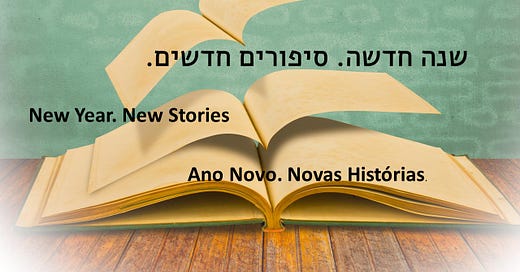So, how would you summarize 5781, the Jewish year that was? Did it seem like a continuation of the year before, what with COVID-19 lingering in our lives? Was it a good or a bad one? Did it treat you with compassion, or presented hardships? Did you have time to breath and ponder, or was out of breath for 365 days, just trying to catch up? And maybe a bit of both?
I find myself wondering if this habit – of making year end summaries and accounts and sharing hopes for the new year – is helpful. I mean, beyond the need some of us have for rituals that mark the new year, does taking stock help us revamp for the journey ahead? Can we leave the woes and worries behind and start a clean slate?
Seeking new year’s inspiration, I found it, as always, in the stories. I stumbled across the story of Aladdin and the Magic Lamp, an ancient middle eastern folktale. Hundreds of years before Disney studios created the cartoon figure with the bashful smile and perfect abs, the story of Aladdin made its way thanks to storytellers who wondered the region.
Aladdin, the “diamond in the rough”, the street boy turned prince, after enduring endless hardships and several close encounters with death, is a classical “rags to riches” story. On his journey towards love, riches, and royal status, young Aladdin has to face and vanquish the powerful sorcerer, who embodies pure evil, and the desire for absolute power and control.
Let me refresh your memory. There are several key figures in the story:
The princess: Aladdin’s beloved, for whom he is willing to face dangers and the evil sorcerer who threatens to overthrow her father, the Sultan.
The Genie in the lamp: Aladdin’s helper. Although he spends years cooped up in a small lamp, he possesses great knowledge of the world and of human nature.
The villain: Aladdin’s worthy opponent, the embodiment of destructive power.
And finally, the protagonist: the pure at heart street boy who shows valor, resilience, and the capacity to learn and grow from the blows and hardships he endures.
And then there is the audience, awaiting the happy ending.
Most contemporary versions of the tale end when Aladdin vanquishes the evil sorcerer and marries the princess, and they, well, “live happily ever after”. But in the oral folktale, Aladdin must face one final challenge. Before he can assume his rightful royal position and gain his betrothed’s deep appreciation, he must first overcome the sorcerer’s brother, a trickster with powerful stratagems up his sleeve, who is seeking revenge. He is the worst kind of evil – one in disguise.
Only after Aladdin exposes the villain for who he really is, can he reach the quiet, happy, and prosperous life he always dreamed of. The story compensates us for the lack of justice in the world, by creating a parallel universe where evil is vanquished and the good prevail, and where hope chases away despair.
“And what if my story does not have a happy ending”, asked me a woman participant who waited quietly at the end of a workshop, until everyone has left.
Well, our own stories don’t always have happy endings. Sometimes they don’t have an end at all, as they continue to haunt us. But our own personal stories are filled with passion and love, fear and courage, losses, and revelations. In our own stories there is often something or someone worth fighting for. And there are fairy godmothers or friendly elves, as well as demons and monsters we must overcome.
Our stories don’t always have a happy ending, but they are always meaningful. Some stories linger with us for years, and they always hold the promise of change, growth, even healing.
As 5781 ends, take the time to reflect on the causes and people in your life that were worth fighting for. Take the time to appreciate the resilience and courage you showed, and how you “rolled with the punches”. Take the time to thank the helpers, your own “genies in the lamp”, who stood by you in troubled days. And as 5782 begins, make room for new stories.
Shana Tova. A year of new stories.





